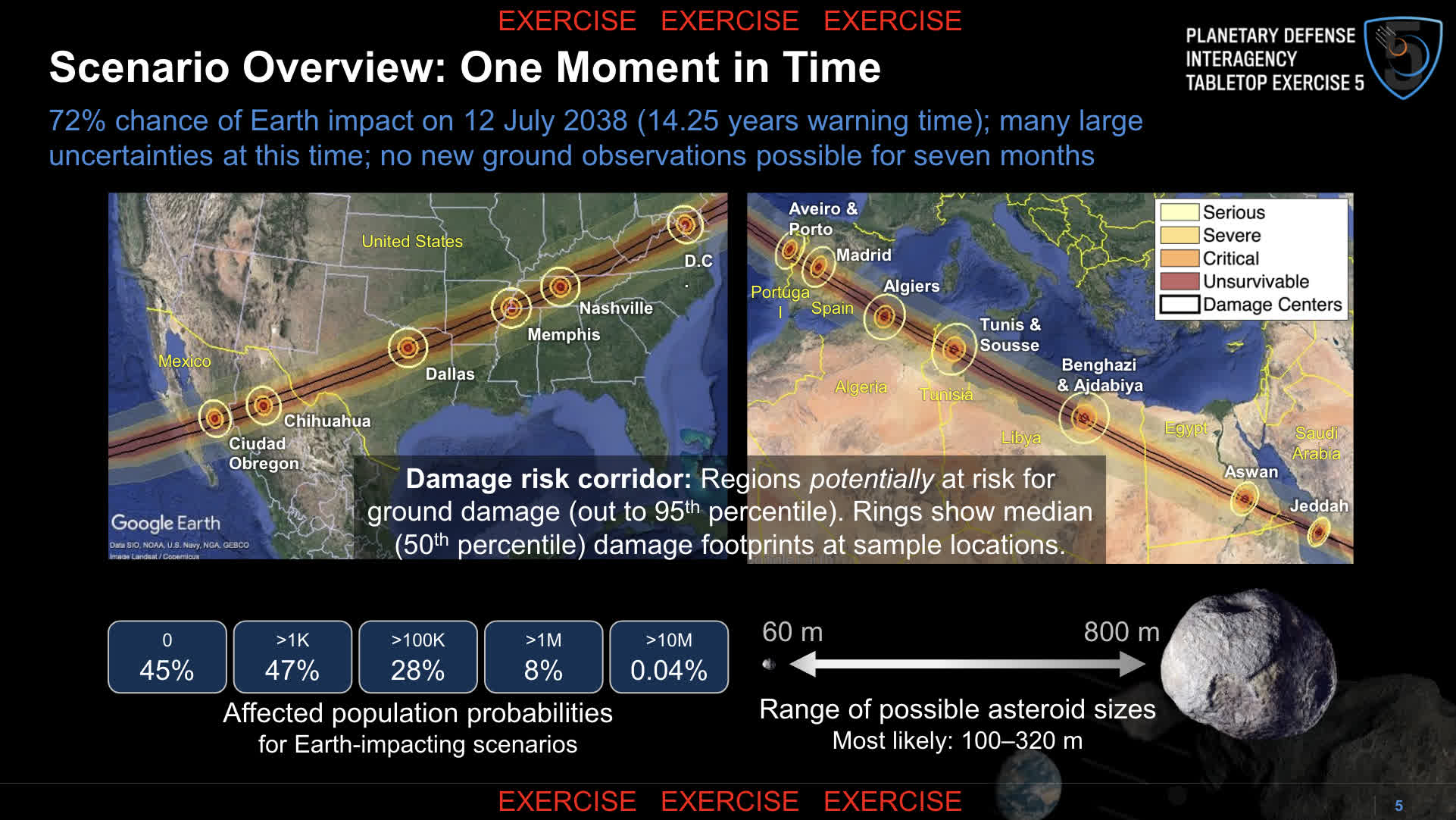Why it matters: In a conference in Washington D.C. this week, NASA’s Planetary Defense Coordination Office and the Federal Emergency Management Agency ran a chilling simulation – what if a massive asteroid was barreling towards Earth with over a decade’s notice? The exercise, held every two years, lets concerned agencies game out response plans for potentially catastrophic asteroid impacts.
The fictional scenario this year involved a newly-discovered asteroid with a 72% chance of slamming into Earth on July 12, 2038 – giving 14 years of warning time. Details were murky to give participants a real challenge, with many uncertainties around the rock’s size, composition, and precise trajectory.
“The uncertainties in these initial conditions for the exercise allowed participants to consider a particularly challenging set of circumstances,” said Lindley Johnson, planetary defense officer emeritus at NASA Headquarters in Washington. “A large asteroid impact is potentially the only natural disaster humanity has the technology to predict years in advance and take action to prevent.”
Over the multi-day tabletop exercise, the almost 100 participants from NASA, FEMA, and for the first time international collaborators mapped out potential response timelines for deflecting or disrupting the asteroid using kinetic impactors, ion beams, and other techniques. They had to balance waiting for more data against the urgency of immediately beginning costly space missions and other preparedness efforts like evacuation planning. Clear global cooperation through channels like the UN’s Space Mission Planning and Advisory Group (SMPAG) and coordinated public messaging were also examined, as highlighted in a presentation.

A quick-look report from NASA highlighted some key gaps – decision-making processes for approving and funding space missions are still undefined, effective regional and national asteroid impact disaster response plans don’t exist yet, and mechanisms for timely international coordination on communications need more development. Concerns were also raised about the potential for misinformation and disinformation to spread amid such a high-profile event.
The drill also incorporated new data from NASA’s DART mission, which successfully impacted the asteroid moonlet Dimorphos last year to test a kinetic impactor deflection technique. But the report noted that while a promising method, kinetic impactors remain the only approach technically demonstrated in space so far for asteroid deflection.
Of course, actual major asteroid impacts on Earth are vanishingly rare events, even as NASA issues alerts about them whizzing past Earth fairly frequently. The last significant asteroid strike was the relatively small 2013 Chelyabinsk meteor that caused localized damage upon entry. And no known asteroids currently threaten Earth.
Still, NASA thinks it’s better to be safe than sorry. The agency is currently developing the NEO Surveyor infrared space telescope to discover and study potentially hazardous near-Earth objects years before any impact risk. It aims to launch in June 2028.

